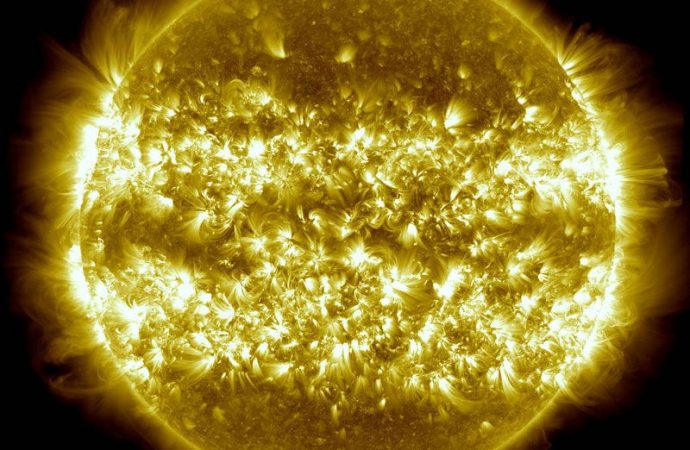Surprise magnetic reversals and an unexpectedly fast rotating wind mark the first findings from NASA’s Parker Solar Probe.
Source: Nature.com
A spacecraft buzzing past the Sun has caught the best-ever glimpse of the birthplace of the solar wind — the stream of energized particles that floods outwards from the star.
NASA’s Parker Solar Probe spotted strange spikes in the wind, where particles speed up and flip the direction of the wind’s magnetic field. The spacecraft also observed the wind rotating around the Sun faster than expected — suggesting that scientists’ understanding of how stars’ rotation slows down as they age could be wrong.
The findings, described in four papers published on 4 December in Nature1–4, could help researchers to better prepare for periods when the solar wind is particularly turbulent and knocks out radio and other communications as it washes over Earth. They are the first discoveries from the Parker Solar Probe, which launched in 2018 and has made three circuits around the Sun so far.
“We’re seeing terrific new plasma astrophysics in action, right from the beginning,” says Stuart Bale, a plasma physicist at the University of California, Berkeley. “It’s been spectacular.”
Close encounters
The Parker Solar Probe is gradually drawing closer to the Sun as it loops around the star. The most recent encounter was in September, and the next is expected in January. “We’re observing in a regime that we’ve only speculated about before now,” says Sarah Gibson, a solar physicist at the National Center for Atmospheric Research in Boulder, Colorado. The probe is studying the energy that heats the Sun’s outer atmosphere, or corona, and accelerates the solar wind.
Although scientists can study the solar wind as it washes over Earth, doing so is like trying to study the origin of a waterfall from halfway down the cliff over which it pours, says Bale. “If you want to know the source, you have to get up there and get closer — is it coming from one hole in the ground? From a bunch of seams in the rocks? Is there a sprinkler system up there?”
The Parker Solar Probe measured a portion of the solar wind coming from a small hole in the Sun’s corona near the equator1. It is the closest look yet at one of the solar wind’s points of origin.
The spacecraft also found that as the wind streams out into space, parts of it race ahead in high-velocity spikes. “I think of them as rogue waves,” says Justin Kasper, a space scientist at the University of Michigan in Ann Arbor. Within these waves, the speed of the solar wind doubled, and the flow was so strong that it temporarily reversed the wind’s magnetic field3.
The probe flew through more than 1,000 of these spikes each time it zipped past the Sun, Kasper says. Scientists don’t yet understand what causes them.
Speed bump
Another surprising finding is how quickly the solar wind rotates around the Sun as the star spins. Models suggest that the wind flows in this direction at a speed of a few kilometres per second — but the Parker Solar Probe measured it moving at around 35 to 50 kilometres a second. “The jury is definitely out on what’s causing this,” says Kasper.
The discovery has major implications. Knowing that the wind is rotating at a different speed than expected could help researchers to improve predictions of when a dangerous solar outburst might reach Earth. The finding also suggests that the solar wind is transporting more energy away from the Sun than previously thought, so the star’s rotation might be slowing down more rapidly than expected. If so, astronomers might need to revise their ideas about how other stars in the Universe age.
But, so far, the Parker Solar Probe has studied only a small portion of the Sun at close range. More observations are needed to confirm the unexpectedly fast rotation speed of the solar wind, says Adam Finley, an astronomer at the University of Exeter, UK, who has modelled how the wind slows the Sun’s rotation.
There’s plenty more time for discovery. By the end of its mission in 2025, the probe will have had 24 close encounters with the Sun — getting more than three times closer to the star than it has so far.
Source: Nature.com

































Leave a Comment
You must be logged in to post a comment.